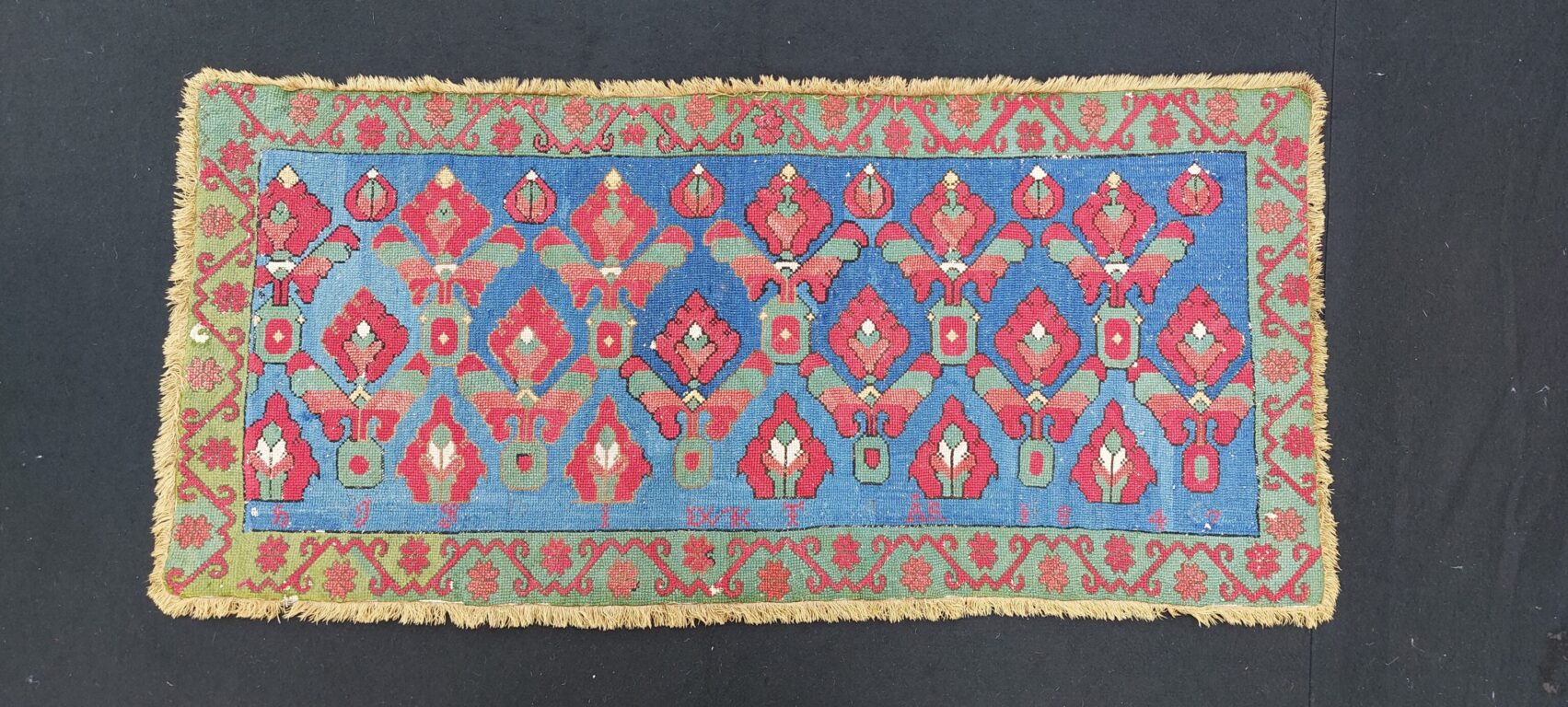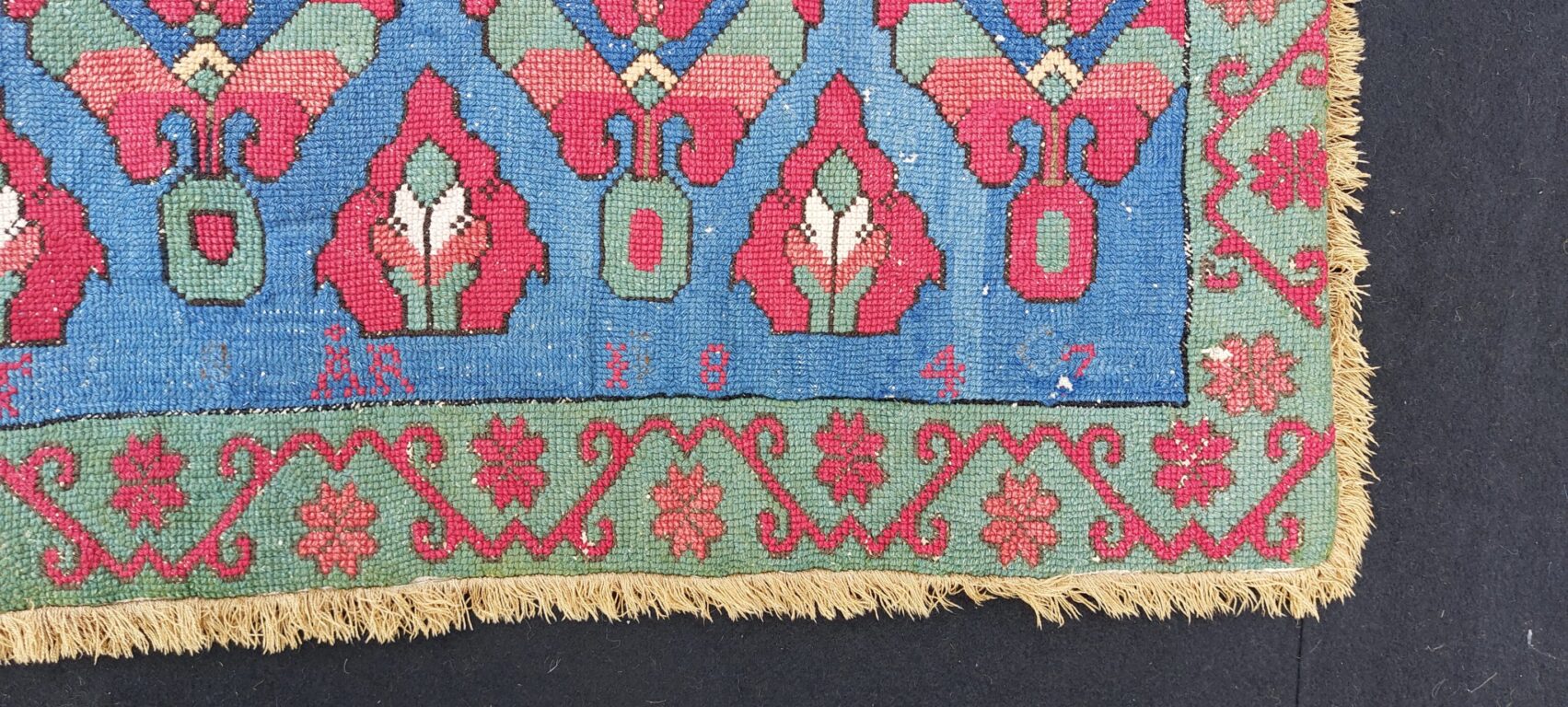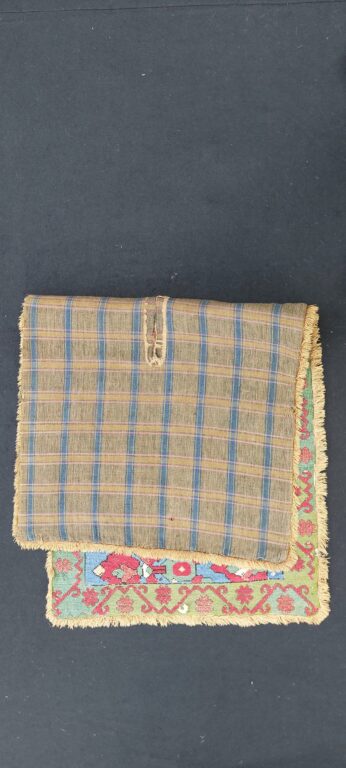Swedish Cushion
Description
This Swedish cushion is dated to 1847. It was customary at the time to date and initial such pieces of needlework. The example in hand, too, bears various initials along the bottom edge of the field, the ones next to the date being ÅR, which is most likely a reference to the name of the needle woman.
The textile is embroidered all over and worked in wool and cotton (the latter for the white) on a canvas. A simple colour scheme of two shades of blue for the background, two shades of green, two shades of red and white for the plant patterns is reciprocated by the simplicity and clarity of the design. The leaves going off the stem of each flower connect diagonally to the stem of the flower in the row above, thus forming a grid of diamond shapes in which the flower heads are set. A simple meandering border on a green ground encloses the field.
A relatively finely woven woollen cover on the back has a slit in the middle to enable the stuffing of the cushion (see additional image).
Cushions of this size usually served as carriage cushions, or agedyna, the Swedish name for a double cushion used in carriages on family outings (see Willborg, Peter, Flatweaves from Fjord and Forest. Edited by David Black and Clive Loveless, London, David Black Oriental Carpets, 1984, page 19).
According to Willborg, opt.cit., pages 16 and 41, the technique employed in the creation of this cushion is called twizt-stitch, which is not unlike a particularly dense cross stitch providing a full covering of the foundation. It was widely used in Swedish textiles, especially in Skåne. A similar example to the piece in hand, with an almost identical border, is published in Willborg, op.cit., page 40.
This is a beautiful example of Swedish textile art.



